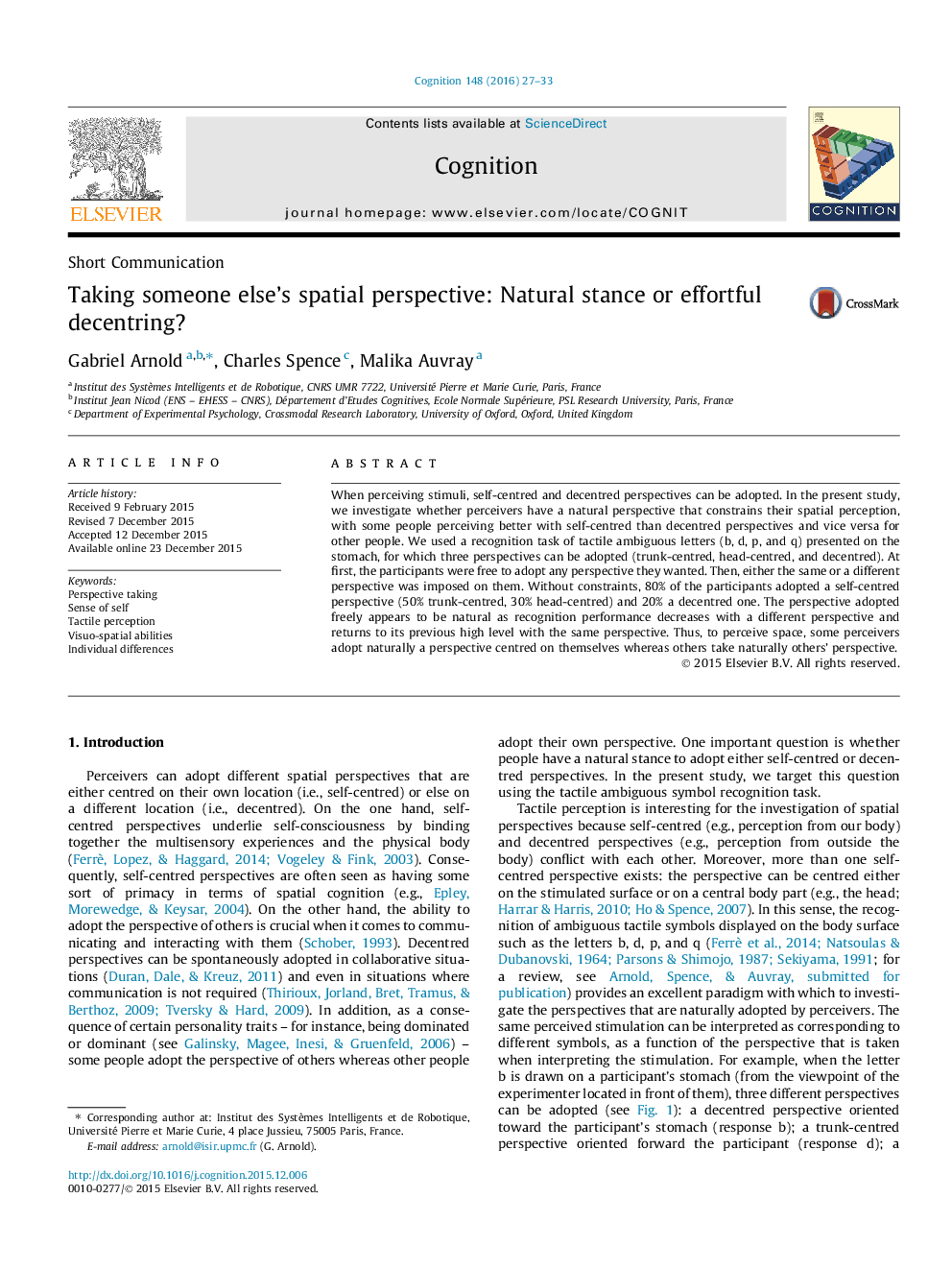| Article ID | Journal | Published Year | Pages | File Type |
|---|---|---|---|---|
| 926337 | Cognition | 2016 | 7 Pages |
•A tactile ambiguous symbol recognition task was used to investigate spatial perspectives.•80% of observers spontaneously adopted a self-centred perspective (20% a decentred one).•Imposing a different perspective on participants involved a cost in terms of symbol recognition.•Performance improved again when going back to the perspective adopted spontaneously.•Thus, the perspective adopted is natural and constrains spatial perception.
When perceiving stimuli, self-centred and decentred perspectives can be adopted. In the present study, we investigate whether perceivers have a natural perspective that constrains their spatial perception, with some people perceiving better with self-centred than decentred perspectives and vice versa for other people. We used a recognition task of tactile ambiguous letters (b, d, p, and q) presented on the stomach, for which three perspectives can be adopted (trunk-centred, head-centred, and decentred). At first, the participants were free to adopt any perspective they wanted. Then, either the same or a different perspective was imposed on them. Without constraints, 80% of the participants adopted a self-centred perspective (50% trunk-centred, 30% head-centred) and 20% a decentred one. The perspective adopted freely appears to be natural as recognition performance decreases with a different perspective and returns to its previous high level with the same perspective. Thus, to perceive space, some perceivers adopt naturally a perspective centred on themselves whereas others take naturally others’ perspective.
